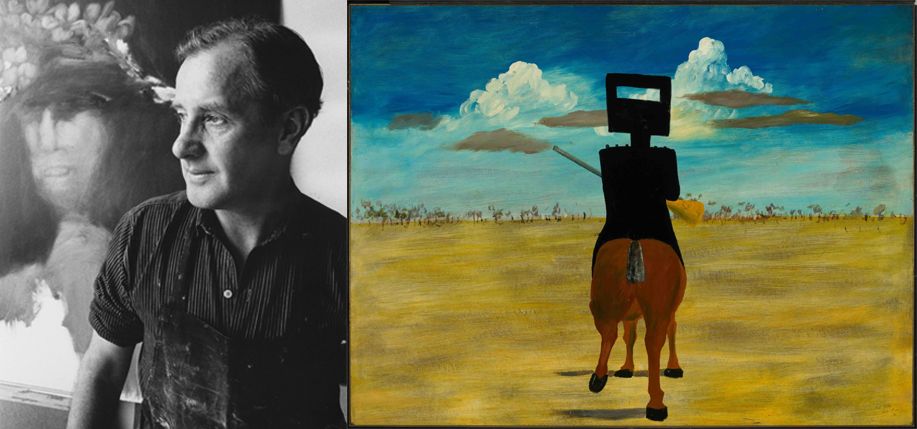A centenary symposium was held at London’s Royal Academy of Arts in April to honor artist Sir Sidney Nolan (right), an Australian with Irish roots who called himself a “citizen of the planet.” An avid traveler, Nolan spent time in Europe, Africa, Asia, and Antarctica. His refusal to be geographically tied down became the calling- card of his creative endeavors.
The one-day symposium explored critical themes in contemporary art, drawing on Nolan’s work and influence across countries and continents to examine what it truly means to be a global artist and included an exclusive tour of the exhibition Unseen: Works from the Sidney Nolan Trust Collection at Australia House, London.
Nolan’s characteristic internationality is apparent in the worldwide presence of his work, which appears in collections at the National Gallery, Tate, MOMA, Pittsburgh Museum of Art, and Irish Museum of Modern Art, among others.
Nolan traced his ancestral roots to a small village near the Burren, County Clare in the 1870s. In 1991, he dedicated a series of paintings to the Irish people, including one of the Wild Geese, the young Irishmen who brought the army of William of Orange to a standstill and sailed to France to join the Catholic James Stuart. These men were the first figures in a sustained diaspora that installed an Irish presence in the armies of other nations. This theme recurs in Nolan’s Ned Kelly series (above), which depicted Irish bandits on the run from English soldiers across the Australian bush.
A Global Artist’s Irish Roots


Leave a Reply